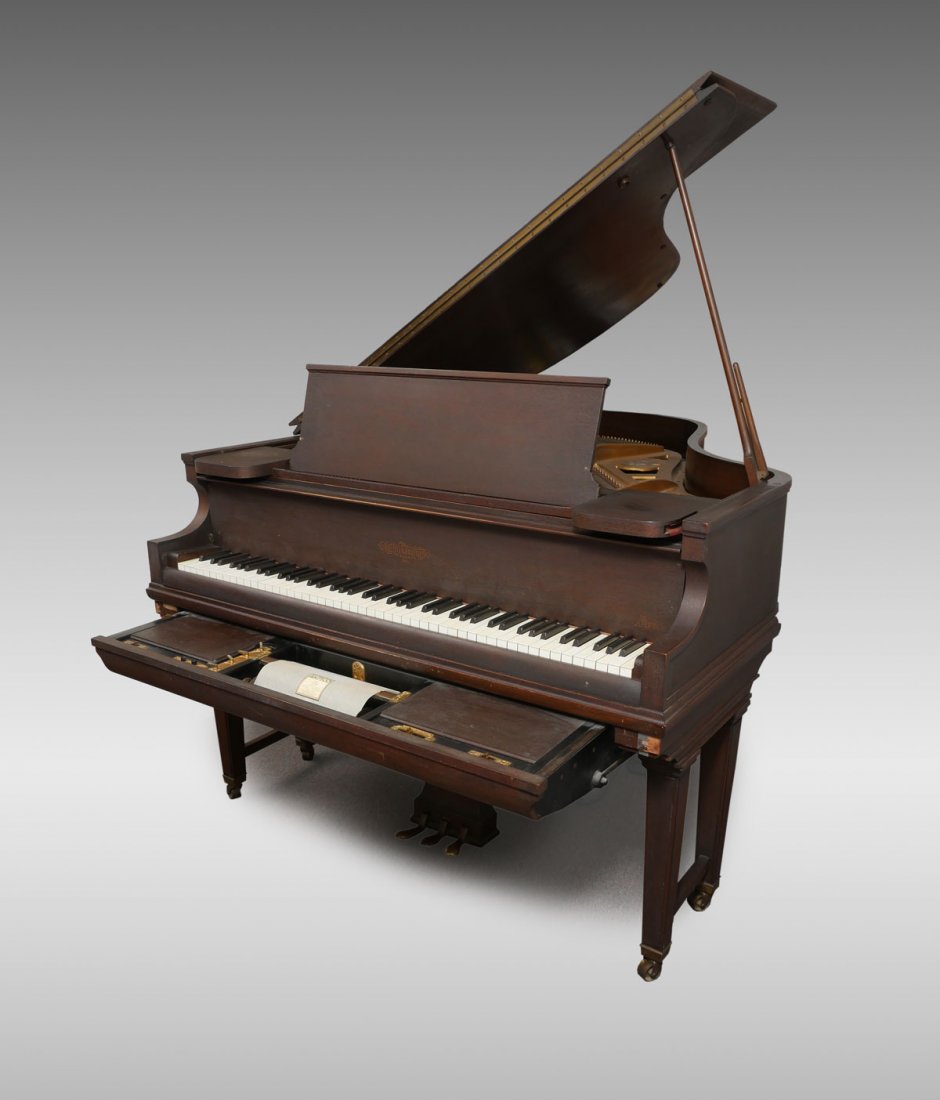
Powers 2, 4 and 8, operated by adjacent perforations on the roll, collapse by 1/8th, 1/4 and 1/2 of an inch respectively. Is operated by the outermost dynamic coding perforation on the roll, causes the top section of the accordion to collapse, moving the left-hand end of the knife valve arm byġ/16th of an inch. Positions which do not operate notes, but which instead allow atmospheric air to pass through elongated tracker bar holes, operating the valves to control one of two accordionĮach accordion has four separate sections, which progressively double in span, from top to bottom. At the left-hand edge of the music roll (and also at the right-hand, which is not shown), there are four special perforation Part of the Dynamic Control Mechanism of the Duo-Art.Īt the right, a perforated music roll passes over a tracker bar, which has holes in it connected via many small tubes to the individual note The layout below is not necessarily representative of an Windways inside the expression box, and thence to an electric suction pump by means of the pipe at the top of the diagram. In the diagramīelow, air is evacuated from the Duo-Art playing mechanism (the pneumatic stack) through a pipe on the left, passing through various Proprietary dynamic control mechanisms reduce this suction level in various sophisticated ways, so that a wide variety of dynamic effects is possible.


In all normal reproducing pianos, an electric suction pump powers the playing mechanism, and supplies a sufficient level of suction for the maximum loudness neededīy the piano. The centre of such a piano would fit more closely with the Duo-Art division. The reasons for this difference were not documented at the time, but may haveīeen influenced by the phonograph/player piano project mentioned above, which adopted an 85-note piano as the standard, leaving the top three note tracks onĪ normal 88-note roll to be used for synchronisation purposes. Occurred between E b and E above middle C, one note lower than on most other systems. Like the Themodist Pianola, the Duo-Art divided its playing mechanism into two halves, although the border from bass to treble The audio recording is the copyright of the Pianola Institute, 2006. This roll was played back on a Steinway Duo-Art grand in London, in December 2004. It is sometimes said that the highly edited Duo-Art rolls are more akin to portraits than to photographs, but a portrait can often be the more telling of the two.

This example was recorded by the young Chilean pianist, Rosita Renard, and published in the summer The musical editors was paramount in determining how faithful a particular roll might be. Trio-Art, whereas the name Duo-Art would have ideally suited a combined phonograph and player piano.Īs was the case with the Ampico for most of its existence, the Duo-Art recording machine did not record the pianist's dynamics automatically, and so the skill and experience of Such an instrument might more aptly have been called a It is perhaps significant that at the very outset, Aeolian sought to emphasise the triple nature of its new instrument, allowingįor automatic performance, personal control of standard rolls, and the direct playing of the piano by hand. Passively to the performances of the great masters. On the part of Aeolian, namely an unsuccessful attempt to produce a synchronised phonograph and player piano, which occupied the Aeolian experimentalĭepartment for many years, and an apparent belief that most music-lovers wanted to create their own interpretations on the pianola, rather than to listen There would seem to be two reasons for this uncharacteristic tardiness Time the Welte-Mignon had been on sale for nine years, and various American manufacturers had already stepped into the market, such as the American PianoĬompany, with its Stoddard-Ampico system, which is reputed to have been launched in 1911. The Aeolian Company was a relatively late entrant to the world of reproducing pianos, bringing the Duo-Art before the musical public in March 1914. The Steinway Duo-Art Grand Piano, New York, Autumn 1914 onwards.


 0 kommentar(er)
0 kommentar(er)
